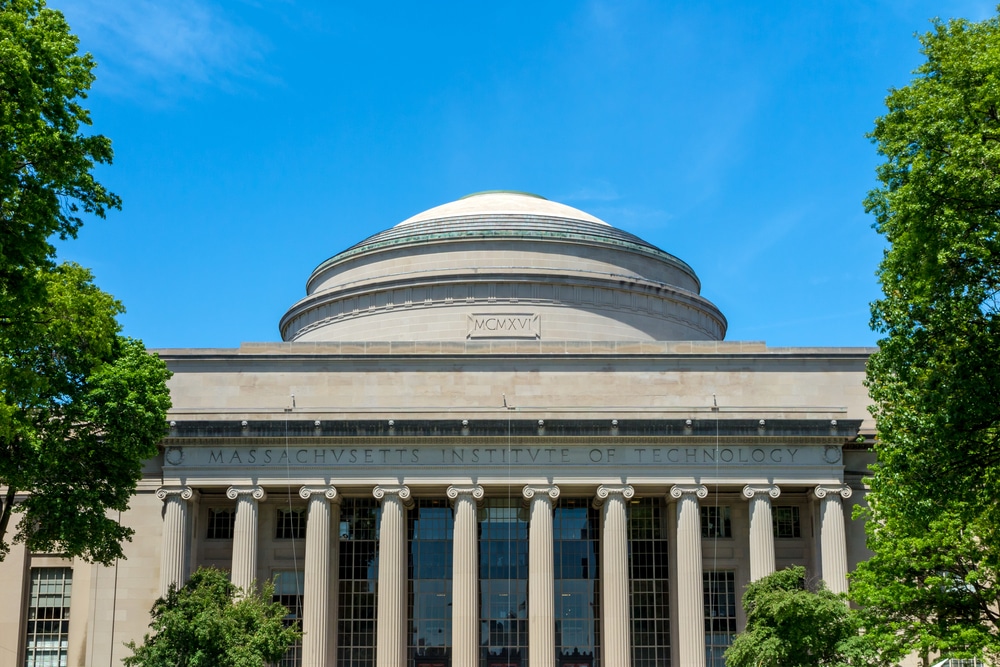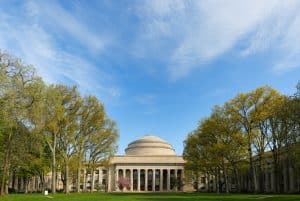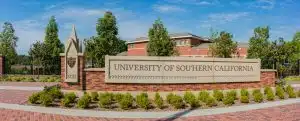The Massachusetts Institute of Technology is renowned globally for its science, engineering, and technology programs. MIT is located in a city home to other educational establishments, trendy eateries, museums, and a vibrant community. Read on and explore the unique opportunities and vibrant atmosphere that make this institution a standout.
The Massachusetts Institute of Technology, or MIT, is located at 77 Massachusetts Avenue, Cambridge, Massachusetts, USA. Its position in Cambridge puts it at a central point for intellectual and innovative activities, ideal for students interested in technology and research.
Cambridge is a hub of education and innovation. Here, you’ll find a unique mix of historical charm and modern innovation, with endless opportunities for learning and growth. Being in Cambridge means being surrounded by high-tech companies and startups, offering unmatched opportunities for internships and collaboration. You can work alongside industry leaders and contribute to impactful projects.
Life outside the classroom in the Cambridge-Boston area is filled with cultural, social, and professional events. There’s always something happening to expand your horizons. MIT’s location fosters a culture of innovation and collaboration. The tech scene provides fertile ground for ideas and research, leading to real-world applications.
Your work at MIT can extend beyond the campus, impacting the community and the world. The institution’s strategic location amplifies its commitment to solving global challenges. Boston’s connectivity ensures MIT is accessible to a global community. This diversity enriches the campus culture, providing a global perspective.
MIT’s location is a gateway to possibilities, where you can excel academically, contribute to your field, and positively impact. Where you study influences your journey, and MIT offers an environment for success.
Is MIT private or public?
The Massachusetts Institute of Technology (MIT) is a top private research university famous for its breakthroughs in science, technology, engineering, and mathematics (STEM). Understanding the distinction between public and private universities such as MIT can provide deep insights into how they operate, fund their projects, and select their students.
MIT’s private status allows it to design its curriculum, research projects, and strategic direction without direct state control. This independence enables the institute to pursue innovative research and create programs that align with its mission. For students, this means access to cutting-edge education and resources.
Funding is a key differentiator for MIT compared to public universities. MIT supports its ambitious research agenda through tuition fees, research grants, and a substantial endowment, attracting leading faculty and students globally. This financial model provides the flexibility to fund high-risk, high-reward projects, leading to significant advancements in various fields.
MIT’s admissions process is notably competitive, emphasizing talent and potential impact on their fields. Being private, MIT can employ a holistic review of applicants, ensuring a talented and dynamic student body. Understanding MIT’s status as a private university highlights the benefits it offers to the academic and research communities.
This knowledge is essential for prospective students as they consider their higher education options, helping them make informed decisions about their future. MIT’s role in leading STEM education and research provides unparalleled opportunities for learning, innovation, and contributing to global challenges.
A Brief History of MIT
With a vision, William Barton Rogers founded the Massachusetts Institute of Technology (MIT) in 1861. He aimed to blend practical skills with theoretical knowledge during the industrial revolution. This approach was designed to make the United States a leader in global innovation and industrial growth. Let’s explore how MIT has achieved this status.
The Early Vision and Challenges
Rogers wanted to create a polytechnic institute different from his traditional education at the time. He saw the need for education that fueled technological advancements and industrial growth. Despite financial struggles and skepticism, MIT, located in Cambridge, quickly became a leader in engineering and scientific research. Understanding MIT’s foundation shows how it overcame early challenges to contribute significantly to the United States’ industrial growth.
Transforming into a Research Giant
By the 20th century, MIT had become a research giant. This change was due to the importance of research in technology and science. MIT researchers developed radar technology during World War II, contributing to the Allied victory.
After the war, MIT expanded its research, benefiting from government and private funding. Establishing research labs like the Lincoln Laboratory and the MIT Research Laboratory of Electronics marked MIT as a leader in electronics, computer science, and artificial intelligence research.
Leading the Way in Computer Science and AI
MIT’s role in computer science and artificial intelligence is noteworthy. In the 1950s and 1960s, it led to computer science research, developing systems that allowed multiple users to access a computer simultaneously.
The MIT Artificial Intelligence Laboratory, founded in 1959, laid the groundwork for AI and machine learning. This lab’s work in robotics, language processing, and computer vision has influenced academic research and commercial technology development.
Fostering Innovation and Entrepreneurship
MIT has been a cradle for entrepreneurship and innovation. The MIT Media Lab, established in 1985, merges technology, multimedia, and design. MIT alumni and faculty have founded companies like Intel, Dropbox, and Qualcomm, showcasing MIT’s impact on technology and entrepreneurship.
Today, MIT addresses global challenges with initiatives focused on climate change, sustainable energy, and digital learning. Its commitment to interdisciplinary research and education prepares students to solve complex problems. MIT’s adoption of digital platforms has made its courses accessible worldwide.
How big is the MIT campus?
MIT, located in Cambridge, Massachusetts, is a 168-acre campus with over 40 gardens and more than 60 public artworks by renowned artists and architects, offering mental stimulation and aesthetic pleasure.
The architecture on campus, ranging from neoclassical to deconstructivist, houses state-of-the-art research and creativity spaces. Notable architects like Alvar Aalto and I. M. Pei have contributed to the campus’s design, making it a hub for academic and research excellence.
What are the available facilities inside MIT?
The Massachusetts Institute of Technology (MIT) is renowned for its contributions to research and innovation. It also offers facilities that cater to the holistic development of its community. Here’s a closer look at what MIT offers.
- Athletic and Recreational Spaces: MIT prioritizes physical health and teamwork. The Johnson Athletic Center features an indoor skating rink and a fieldhouse. MIT also provides children’s swimming lessons and summer day camps, fostering community spirit from an early age.
- Family Support: MIT provides childcare options, including preschool programs and family day care, acknowledging the challenges of balancing academics with family life.
- Technology Resources: The Audio-Visual department and computing facilities ensure that everyone at MIT has access to the latest technology, including supercomputers and discounted hardware and software.
- Community and Creativity Spaces: Places like the Faculty Club and copy technology centers offer venues for dining, socializing, and project work, encouraging creativity.
- Creativity and Artistry: The Hobby Shop and the Student Art Association offer resources for woodworking, metalworking, and various art forms, promoting creativity outside traditional classroom settings.
- Academic and Research Support: Resources such as the Language Laboratory and the library system support academic and research endeavors, providing essential tools and information.
- Spiritual and Cultural Support: Facilities like the MIT Chapel and the Religious Counselors’ Building cater to a range of faiths and practices, supporting the spiritual and cultural well-being of the community.
- Astrophysical Observatory: The Observatory supports advanced research and education in astronomy, offering unique learning experiences.
MIT’s facilities are designed to support every aspect of community life, ensuring a balanced and enriching experience for all its members. From supporting physical health to fostering creativity and family well-being, MIT’s campus is equipped to meet various needs.
What is MIT known for?
The Massachusetts Institute of Technology (MIT), located in Cambridge, Massachusetts, sets a global standard in innovation, education, and research. It extends its influence beyond engineering and physical sciences to impact modern scientific advancement and educational excellence. Here’s a closer look at this institution.
Leading in Engineering and Science
MIT is recognized for its excellence in engineering and physical sciences, holding top positions in global rankings. The School of Engineering, especially departments like Electrical Engineering and Computer Science (EECS), Mechanical Engineering, and Civil and Environmental Engineering, is known for pioneering research and innovations.
The institute is also home to interdisciplinary research centers such as the Computer Science and Artificial Intelligence Laboratory (CSAIL) and the Media Lab, with projects ranging from robotics to human-computer interaction.
Academic Excellence Across the Board
MIT is renowned for its contributions to economics, political science, linguistics, and philosophy. Thanks to its Nobel laureate faculty, the Economics Department is influential in global economic policy.
The Political Science department provides insights into governance and global issues, while the Linguistics program has redefined understanding of syntax and semantics. The Philosophy department studies ethics, logic, and philosophy of science, influencing scholarly thought worldwide.
The Challenge of Admission
Admission to MIT is competitive, reflecting the institute’s reputation. The selection process evaluates academic prowess, personal qualities, and potential for contribution, fostering a dynamic community.
Opportunities for Undergraduate Research
MIT’s Undergraduate Research Opportunities Program (UROP) allows students to participate in original research early in their academic careers, often leading to successful startups within MIT’s entrepreneurial ecosystem.
A Leader in Research
MIT is at the forefront of nanotechnology, artificial intelligence, and biotechnology research, tackling global challenges such as sustainable energy, climate change, and water scarcity.
A Diverse and Supportive Community
MIT’s student body enriches the campus experience and is supported by comprehensive resources, including mental health services and academic advising, to help students succeed.
Extracurriculars and Innovation
MIT’s wide range of clubs and organizations fosters creativity and innovation, enriching students’ experiences beyond the classroom.
Tradition and Campus Culture
Unique traditions and student-driven events, such as the MIT Mystery Hunt and the “Piano Drop,” contribute to a culture of intellectual creativity and humor.
Housing and Community
MIT guarantees housing for all undergraduates, offering a range of living options that support personal growth and a sense of community.
Financial Aid and Access
MIT ensures talented students can attend through a need-blind admission policy and extensive financial aid programs, regardless of financial barriers.
Innovation in Kendall Square
Located in Kendall Square, Cambridge, MIT benefits from a collaborative environment with industry and research, providing unique opportunities for internships and employment.
MIT’s reputation as a leading institution is due to its rigorous academic environment, groundbreaking research, and supportive student experience. MIT continues to shape the future through its contributions, embodying a spirit of exploration and discovery.
What is outside the MIT campus?
Discover the vibrant community and attractions around the Massachusetts Institute of Technology (MIT). This guide highlights museums, neighborhoods, and attractions in Cambridge, Massachusetts, and Boston.
Museums and Places of Interest
- MIT Museum in Kendall Square: Experience science and technology through interactive displays, kinetic sculptures, and holography exhibits.
- Harvard Museum of Natural History: View exhibits from dinosaur fossils to gemstones, showcasing the natural world.
- Peabody Museum of Archaeology & Ethnology: Explore cultures worldwide with extensive anthropological collections.
Neighborhoods to Explore
- Kendall Square: Center of high-tech and biotech industries, with startups and tech giants. It offers a vibrant community atmosphere.
- Central Square: Known for international restaurants and music clubs, reflecting the area’s artistic scene.
- Harvard Square: Hub of academic life and commerce, famous for its historic bookstores, cafés, and shops.
Boston’s Attractions
- Boston Public Garden and Boston Common: The oldest public park in the U.S., with historic monuments and landscaped areas.
- Freedom Trail: Connects 16 historic sites significant to America’s fight for independence.
- Fenway Park: Home of the Boston Red Sox, it offers insight into American baseball.
- Museum of Fine Arts and Isabella Stewart Gardner Museum: Houses art collections spanning continents and centuries.
- Rose Kennedy Greenway: Features art installations, food trucks, and carousels, emphasizing Boston’s dedication to public spaces.
MIT Dorms and Other Housing Options
Located in Cambridge, Massachusetts, MIT offers housing options designed to suit the diverse needs of its undergraduates. Each option provides unique features to ensure you find a comfortable living environment. Here’s a brief overview:
Residential Halls
MIT’s residential halls house over 3,400 students. With faculty, families, and graduate resident advisors, these halls foster a supportive community. They’re ideal for students seeking to engage in a dynamic setting.
FSILGs
MIT’s Fraternities, Sororities, and Independent Living Groups house over 1,000 students. They offer housing, community, and leadership opportunities, significantly contributing to MIT’s community life through various events and programs.
Institute Houses
- Baker House offers a strong community and traditional architecture, suitable for students who want to be at the center of campus life.
- McCormick Hall provides a supportive environment for women in STEM, focusing on empowerment and leadership.
- New House features cultural and living-learning communities, perfect for students seeking a connection to culture or specific academic interests.
- Random Hall celebrates individuality with unique thematic floors, appealing to those who value creativity and self-expression.
- Simmons Hall combines architectural significance with an active community, appealing to design and community involvement enthusiasts.
MIT’s housing options aim to support your personal and academic growth, offering everything from vibrant residential halls to specialized Institute houses. You’re sure to find a place at MIT where you feel at home, backed by a community that supports your success.
What is MIT’s impact on Cambridge?
MIT significantly contributes to Cambridge through community support and economic growth.
Community Engagement and Support
MIT supports local nonprofits and schools by offering financial assistance and facility access. It encourages its community to volunteer, primarily through the Priscilla King Gray Public Service Center, which provides resources for positive community impact. MIT’s STEM education initiatives inspire K-12 students, ensuring equal access to these fields.
Driving Economic Growth
MIT is very important in its local economy as Cambridge’s second-largest employer. In fiscal year 2023, it contributed approximately $2.3 million in voluntary payments instead of taxes and $84 million in real estate taxes.
MIT is a hub for innovation, attracting startups and talented individuals and fostering economic development, especially in Kendall Square. The Job Connector and Kendall Square Initiative link MIT to the local economy by providing job training and revitalizing the area with new developments.
Fostering Innovation and Collaboration
MIT’s work in Kendall Square has created a vibrant area for innovation. Its collaboration with local businesses and focus on sustainability contribute to a thriving community space, supporting Cambridge’s economic growth and ensuring a sustainable environment for all.
Famous Landmarks Inside the MIT Campus
The Massachusetts Institute of Technology (MIT) campus, located in Cambridge, has stunning architectural works, significant monuments, and community spaces celebrating innovation, history, and community spirit. Explore the landmarks that symbolize MIT’s contributions to science, art, and architecture.
1. Julius Adams Stratton Building (Building W20)
The Julius Adams Stratton Building, or Building W20, is the center of student life, designed by Eduardo Catalano and opened in 1965. It offers dining and shopping at the MIT Coop bookstore and services like the post office and bank, centralizing student needs and fostering interaction.
2. The Alchemist Sculpture
Outside the Student Center, the Alchemist Sculpture by Jaume Plensa marks MIT’s 150th anniversary. This public art pays homage to MIT alumni, symbolizing their legacy of support and innovation inspiring students and faculty with the history and potential to contribute.
3. Kresge Auditorium
Eero Saarinen’s Kresge Auditorium, with seating for 1,200, hosts lectures and performances. The surrounding Kresge Oval offers a green retreat with views of the Charles River, enhancing the community feel.
4. Zesiger Sports and Fitness Center
MIT’s Zesiger Sports and Fitness Center, with swimming pools to squash courts, emphasizes the importance of physical activity in education. This highlights MIT’s commitment to a balanced education, emphasizing the importance of physical health.
5. MIT Chapel
The MIT Chapel, designed by Eero Saarinen, offers a unique space for contemplation. Its design and Harry Bertoia’s altarpiece create a serene atmosphere for reflection, exemplifying MIT’s balanced community focus.
6. Hart Nautical Gallery
Located on campus, the MIT Museum’s Hart Nautical Gallery explores the university’s maritime heritage. The Ship Models exhibit highlights MIT’s contributions to naval engineering, showcasing the institute’s influence in maritime research.
7. Infinite Corridor
The Infinite Corridor, famous for the “MIThenge” phenomenon, connects departments, labs, and classrooms. It symbolizes the intersection of nature and technology, fostering community and wonder.
8. Killian Court
Killian Court, hosting Commencement and orientation, is where traditions thrive. The Great Dome is a backdrop, symbolizing MIT’s impact on the world.
9. Hayden Memorial Library
The Hayden Memorial Library supports humanities, arts, and social sciences studies, part of MIT’s extensive library system, underlining the institute’s commitment to a broad educational spectrum.
10. McDermott Court
McDermott Court, featuring Alexander Calder’s “The Big Sail,” illustrates MIT’s art and technology fusion. Named in honor of Eugene and Katharine McDermott, the court highlights the importance of generosity and artistic expression in MIT’s culture.
Each landmark on the MIT campus has its unique story, contributing to a narrative of inspiration, innovation, and community. The campus is a place of discovery and wonder for students, alumni, and visitors.
Conclusion
The Massachusetts Institute of Technology (MIT), located in Cambridge, Massachusetts, exemplifies human curiosity and pursuit of knowledge. Its position in the Greater Boston area enhances its mission, providing opportunities for research and collaboration. As a hub for scholars and industry leaders, MIT’s campus is a significant site for future-shaping activities.










































